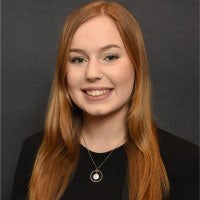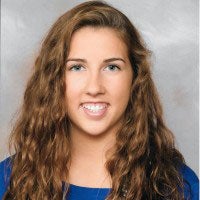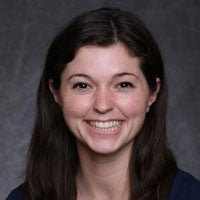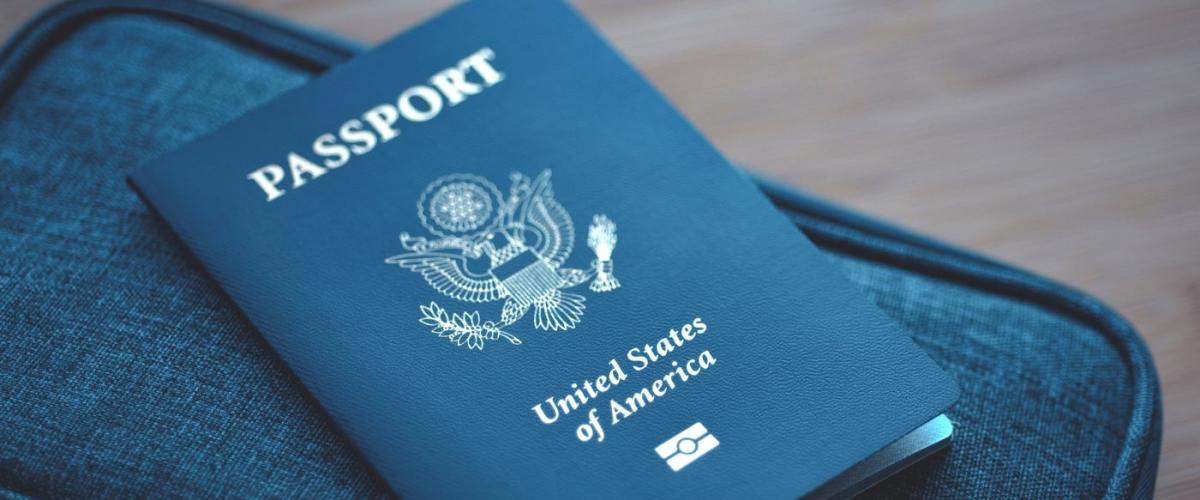This summer, some of our students took part in racial justice-related internships or fellowships. Read on to hear about their experiences, opportunities and guidance for future students.
Samantha Ready
Community Legal Aid Services
The for-profit housing crisis has become embedded in communities across the United States. As this crisis continues to worsen, the ability for low-income community members to obtain and continue residence in safe and habitable housing becomes increasingly difficult, to say the least. Housing is a basic human need and, to me, it should be a human right. This is what led me to Community Legal Aid (CLA).
This summer, I worked as a Summer Associate with CLA’s Housing Litigation team in its Akron office for 10 weeks. CLA is a nonprofit and pro-bono law firm that represents low-income people and families across a variety of legal areas. The housing team has two primary projects that I supported this summer: the Tenant Assistance Project and the Homeownership Project. The Tenant Assistance Project provides representation for tenants facing eviction, issues affecting habitability, problems with public housing units or vouchers, or nuisance complaints, to name a few things. The Homeownership Project primarily assists homeowners in foreclosure and partition proceedings.
My role was to support housing attorneys by suggesting arguments, drafting client complaints and motions, conducting legal research, writing research memoranda, attending client hearings, and meeting with clients. I appreciated how I was included in discussions of how to handle different client situations, and that my input was valued. Additionally, I had the chance to spend a lot of time in court. I accompanied my supervising attorney and other housing attorneys to client hearings in the Akron Municipal Court and met the five magistrate judges there. CLA provided trips for the Summer Associates to the 7th and 9th Courts of Appeals of Ohio and the Youngstown Municipal Court, where we observed oral arguments and had lunch with the judges.
Importantly, the attorneys at CLA taught me what it means to be a community lawyer. In addition to the legal work done in the courtrooms and the office, we participated in a lot of community outreach for counties served by our office (Medina, Summit, Portage, Trumbull, Mahoning, Columbiana, Stark, and Wayne counties). We hosted several information and help sessions for tenant unions, organized information booths at local farmers’ markets, and held weekly tenant Q & A sessions over Zoom. Seeing the housing attorneys take extra time out of their days multiple times each week to give legal advice to community members in need was inspirational, to say the least.
Something that will stick with me is seeing the huge amount of economic and racial disparities that exist in Akron. All of the clients we represented this summer were recipients of public benefits, most of the time including public housing or vouchers. I would say roughly 75% of the clients we worked with were people of color. This is a reminder that in fighting for housing justice, we are always simultaneously fighting for racial and economic justice.
For me, this externship was very meaningful, not just because I honed valuable skills that will aid me in my legal career, but also because of the significance of the work we were doing. I learned how to assert and defend people’s right to housing with the support of local and federal law and policy, which is fundamental in the fight against the housing crisis. I learned the particularities of housing law and saw first-hand how the same laws being interpreted differently produces vast and often detrimental results.
As a student who has always aspired to have a career in public interest law, I wasn’t ever sure of what type of place I wanted to end up working with. After this summer with CLA, I can say that I’ve discovered where I hope to find myself after graduation. I highly recommend this placement to future students who are interested in public interest law. CLA provides opportunities to work across several areas of the law, the attorneys are dedicated to their craft, one will gain both critical legal knowledge, and students have the ability to work on an individual and community level.
Celeste Hudak
Community Legal Aid Services
This summer, I worked as an associate at Community Legal Aid Services in Akron, Ohio, with some time also spent in Youngstown. CLAS covers eight counties and has multiple offices throughout the counties, but operates as one unit.
While in Akron, I mostly worked on asylum cases. The main project we had going on was a collaboration with Akron Public Schools and a program they have called Project Rise. Through this collaboration, APS referred undocumented families in the school district to us. We then met with these families and talked with them about their stories to see if they might qualify for our services. If they did qualify, we had to determine if we thought they had a strong case for asylum or if there were any other possible avenues we could think of to help them.
Unfortunately, there is only one immigration lawyer in the Akron office, so our bandwidth was very limited. We could only take maybe five cases maximum, so we had to be sure to choose people who we thought had the best chance of being granted asylum. For each case, we had to research and brainstorm possible particular social groups that the families could fit into. We also had to research the conditions of the home country in regards to that particular social group.
Apart from this project, I also assisted in preparing some applications for naturalization. The Community Legal Aid Summer Associates also had several opportunities to go to various courts in the surrounding counties and witness many different types of hearings. These hearings varied from eviction hearings to probation violation hearings and even a criminal trial. We also had the opportunity to engage in honest conversations with judges, magistrates, clerks, and other court staff about the reality of the justice system. Overall, it was a rewarding experience and I feel like I came out with so much more knowledge about what practicing law is actually like. In some ways, I was a little disappointed that I didn’t get to see more of how asylum cases evolve, but really it was an important lesson in how long the process really takes.
Community Legal Aid was a great office to work in. The attorneys and other staff were very friendly and always willing to answer any questions I had. They really care about helping the community, so it is a good environment to work in if you have a passion for nonprofit community-based work. I also really enjoyed the amount of opportunities we had to get outside of the office and explore different types of courts. I would definitely recommend an externship at Community Legal Aid to anyone who wants to help fight injustice.
Olivia Cobb
Federal Public Defender, Northern District of Ohio
I would recommend an internship with the Capital Habeas Unit of the Northern Ohio Federal Public Defender to anyone who is serious about criminal justice reform and racial equity in the United States. While I learned much about Capital Habeas Corpus law—a complicated and deeply political practice—the most important thing I did this summer was build my emotional endurance. Practicing alongside the courts and prisons is a marathon of processing psychologically exhausting information. Without exception, clients get to death row after being forced to choose from one heartbreaking set of options after another, starting at a crushingly young age. It is hard to look the consequences of poverty and violence in the eye. It is harder knowing that our clients are punished for crimes that seem unavoidable. They are punished because no one could interfere on the client’s behalf effectively enough to protect them before the crime is committed.
I met attorneys who lived and worked by values I struggled to find in other legal positions. Clients of the CHU are treated with unconditional positive regard. Meetings regularly acknowledged the ethical shortcomings of our criminal justice system. The differences in lived realities for clients of different races, incomes, education levels, and family support were seriously weighed and considered while forming a client’s defense. The systems were acknowledged for what they were capable of being: cold, racist, obstinate, full of willful misunderstandings. But there was still hope.
The attorneys of the CHU worked uphill, blindfolded, with their hands tied behind their backs by the laws surrounding death penalty cases. The work seems to be a slog against a world that quite literally wants your clients dead. But the outlook of the CHU attorneys was not dark. Everyone understood what they were working against, and they celebrated wins and mourned losses with an eye on the horizon. Each day was another day their clients stayed alive.
Much of my work was spent reading case law, reviewing the facts of our client’s cases, and observing meetings and court dealings. Capital Habeas work is a confluence of state, local, and federal jurisdictions. Habeas statutes are difficult to interpret. The case law can be contradictory. The emotional impact of the crimes clients are accused of regularly complicates and clouds the “neutral” air of judges—local and federal alike. Because of the high stakes of each case and the complexity of the law, I did not work directly on individual cases for the most part. I spent the first month trying to grasp the Anti-Terrorism and Effective Death Penalty (AEDPA) statute, reading case law so I could follow the discussions in meetings, and observing presentations to courts.
This summer the Northern Ohio CHU had an oral argument En Banc before the Sixth Circuit, put forward an Evidentiary Hearing before the Sixth Circuit District Court, and appeared in State court for an Atkins Hearing to argue our client was ineligible for execution due to Intellectual Disabilities. My fellow intern and I learned what defenses could delay or deny eligibility for execution. If a Client was under eighteen at the time of the crime they had a Roper Claim (they were guilty of the crime, but innocent of the death penalty). If the jury in the trial court was all white, or if jury members were struck because of their race, the client may have a Batson claim and could be granted a new trial. If the client had a low IQ, manifested before they were eighteen years old, and had two deficits in their ability to function in society, they may have an Atkins claim (stating they were intellectually disabled and, while guilty of the crime, innocent of the death penalty).
We also learned about the complicated procedure surrounding habeas petitions. Clients' cases rose and fell through state and federal courts—sometimes settling in different stages of litigation in both courts at the same time. Habeas claims are federal civil suits filed against the government for wrongful imprisonment. Before a civil suit can be filed at the federal level for criminal defendants, the case must go through state criminal trial court as well as state courts of appeals. Then, the case must be granted state postconviction, a state civil suit reviewing the rights of the client outside of the record (did the client have effective legal representation during trial? Was the jury racially biased? And so on). The post-conviction case may also go through state and federal appeals. If the client has lost in all the processes above, they then may be able to file for Habeas review. Habeas petitions begin in the federal district court but can be bounced back to state court or up through the federal system many times. We drew a lot of diagrams. We asked about the posture of the case a lot of times. Figuring out which court, and in which order, a case was in often was the most frustrating portion of this internship.
At the end of the internship, we visited Ohio’s death row to meet with a client. It was strange and important to meet with someone I had learned so much about through school records and court transcripts. It was humanizing to be in the same building, to see the bars and bells and guards and tables, that had previously been only words on a page. This was my first time visiting a prison. We mostly talked with our client about TV shows and the sadistic raccoon that kept attacking cats outside of the cells on the row. I consider myself an empathetic person. But by the end of our visit, I realized I had spent the summer feeling mostly horror and pity, not connection.
The client we visited was convicted of a haunting, horrifying crime. The circumstances of the client’s childhood were exactly as haunting. Exactly as horrifying. And then I sat down across from him at a cafeteria-styled table. And we talked about the weather and if I liked to hunt, and the raccoon I once skinned with my uncle, and how he had beat almost everyone in their basketball tournament. I am so grateful for this visit. It shocked me into doing what I thought I already had accomplished: interacting with a client as a person instead of as a concept.
It also was important for me to visit a prison. I have studied prisons but this was the first not yucky/gratuitous reason I’ve had to visit one. For similar reasons, it was important for me to see the sun filter in from windows and to see regular interactions between people inside. Horrors happen in prisons, and people do horrible things, but there is still lunchtime in prison, and people who do horrible things still worry about the cats being attacked outside of their window. It was good to remember that life is normal in most places until it is not. That was one of the most impactful lessons I had during this internship.
I also built an effective callous for the human pain and injustice surrounding capital crimes and indigent clients. I am not able to read a case, a horrible case, and I can feel heartbroken, I can feel outraged, but I cannot feel the knives pressed into my skin or the horror of sexual violations in my body. Or if I do feel those things while reading, I can put them down when I leave work. My biggest concern in practicing public defense was that my work would haunt my life. And parts of it certainly did. But I reached a point where I learned to not pull the horrors back up to look at when I got home. This has been fundamental in my ability to complete legal tasks and connect with clients in my current work. I can connect with clients still because I am not trying to feel their pain for them. I am sitting across from them, asking how they feel. I am trying to form their legal strategy to prevent future and further pain. I hope this makes me a better lawyer. And more importantly, I hope this makes me a better person.
The most important thing I did this summer, at least from my perspective, was to ask naïve sounding questions in large meetings. Especially on the felonies side, where case turnover is fierce and pressured, asking why there wasn’t an emphasis on the violence of police laying out a client, handcuffed and on his stomach, while handcuffing his intellectually disabled son with weapons drawn, while perhaps making me seem like a sensitive baby, was an important reminder to the lifelong defenders that the actions of the carceral system are not normal. Are violent. Even when we are used to them.
I learned so many things at the Federal Public Defender office this summer. I am so grateful for the opportunity to learn and grow. I would recommend this position to any justice-focused student.







